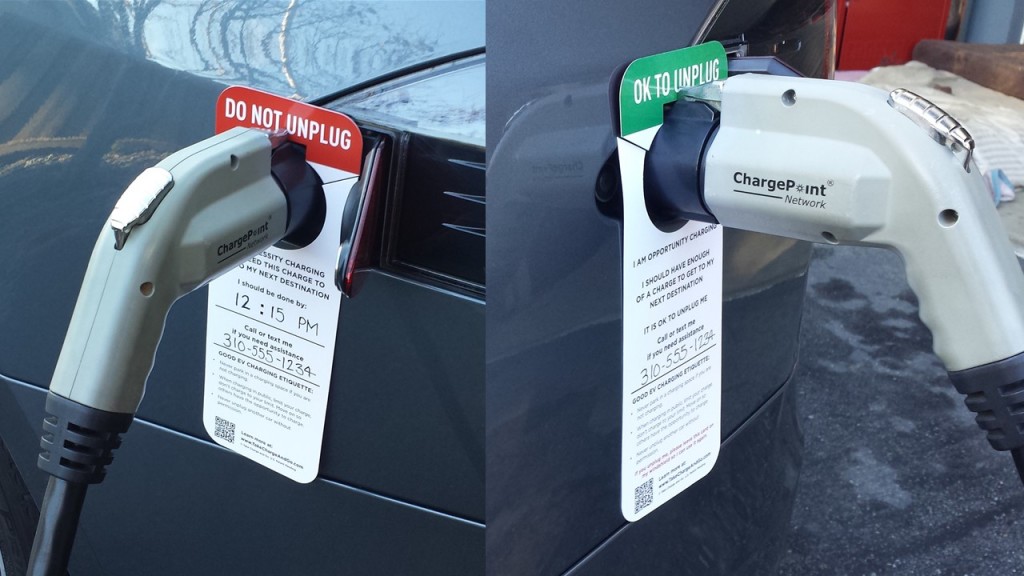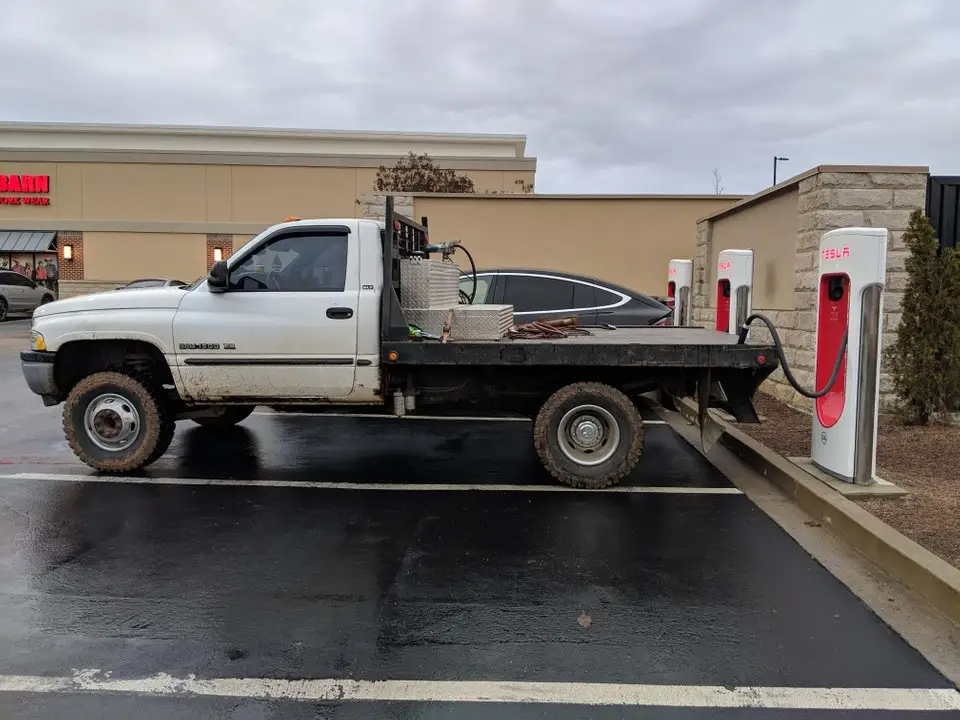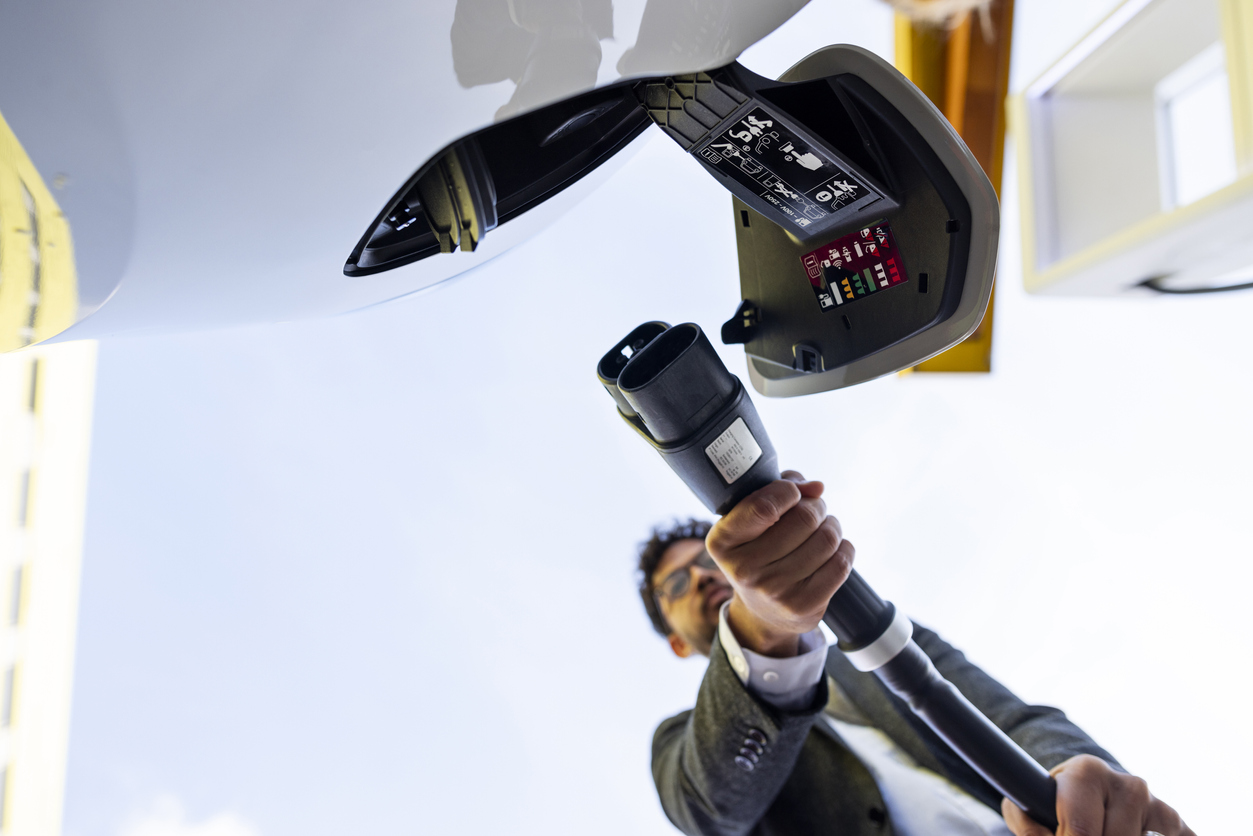TL;DR
Charging etiquette at public stations is definitely a thing; you should know and follow it. Simply stated, EV charging etiquette can be summarized in the immortal words you learned in kindergarten: “Treat others the way you would want to be treated.”
The Nitty Gritty Details of EV Charging Etiquette
I pulled into a mall not too long ago. I had a couple of hours of business to do and decided to use one of the mall’s many Level 2 EV supply equipment stations (L2 EVSEs) to pick up a few electrons, even though I could easily get back home without charging. This mall is also home to one of Tesla’s swankiest showrooms in Silicon Valley. There are lots of L2 charging stations from multiple vendors, Tesla destination charging sites, and Tesla “urban” Supercharger options.
I was attempting to charge my car using the Blink network, and it had been a while since I had used a Blink station. Not only had I forgotten my login credentials, but my credit card on file had also expired. I had considered just finding another place to park, but I was not in a rush. Blink customer support was on the phone with me and working through my login credentials when an elegantly dressed woman in her 30s pulled in next to me, got out of her Model S, and smartly walked away without a backward glance.
I called out, “this is not a parking space,” and right on queue, without hesitation or missing a step as if expecting my critique, she questioned my heritage and informed me about some sexual perversions she must have been contemplating.
In other words, she knew that what she was doing was the most egregious sin you can commit as a member of the EV community, and didn’t give a damn. Hopefully you’re reading this to learn EV etiquette so you can practice it properly and not subvert it like my Tesla-driving compatriot.
We’ll get to abusing charging spots as mere parking in a bit, but first, we’ll start by focusing on how to bring some harmony to the EV community– or at least turn down the temperature a bit.
In many ways, it’s still the Wild West in EV land, especially regarding public charging. There may be some of you reading this who have never seen another EV in the wild, or know of a charging location that never gets used. I’ve traveled enough. I know these situations exist.
But the opposite is also true– there are locations where there are far, far more EVs than there is public charging infrastructure to support them. And as time passes, the former will become rarer and the latter more common. That makes following basic EV charging etiquette all the more important.
The point is, in 2023, there isn’t a perfect homogeneous charging experience where the number of available plugs happens to be n+1 where n is the number of cars pulling in to charge at any given moment. Anyone who has been driving electric long enough has suffered from the indignation of wanting (or needing) a charge and arriving at a known charging spot only to find it occupied.
What can you do besides wait for the perp to leave? For the time being, we will focus on what not to do– and that would be to unplug them. Of course, this advice doesn’t include a situation where the spot has been ICE’d (meaning an internal combustion engine car is occupying a perfectly functioning EV charging spot). I’ll get to that in a bit.
Who has the right to use public charging?
By definition, a public EVSE (or charging station) is not yours to commandeer. It has been placed there for the public, of which you are a member. You do not have any right to assume your needs are greater than the person who got there first. Even if the car charging also happens to have a gasoline backup. If someone is actively charging, que sera, sera. They got there first.
Assuming it is a DC fast charger (DCFC), the plug is locked to the car and you can’t unplug them as long as the session is active. Many cars even lock the plug to the car for AC charging– you can’t unplug it unless the car is unlocked. Other cars will sound an alarm when the plug is removed before the session is complete.
Just! Don’t! Be! That! Entitled! Person!
If it has a plug, it has a right to charge at a public charging location. Full stop. If the car is actively charging and the owner is nowhere to be found, it is human nature to be tempted to unplug them and give yourself a pick-me-up (assuming the cable will reach).
Alternatively, I doubt there is anything more enraging than returning to your car expecting it to be fully charged only to find it unplugged. Here are a few simple rules that, if everyone followed, would reduce the friction on the charging front.
- When using a DCFC, stay with your car if possible. I use DCFC stops to catch up on email and can typically get going again in 15 minutes or less, so this option frequently works out for me. Of course, this isn’t always possible. Sometimes you need 45 minutes or more on the charger to get to your next destination. Sometimes you need to grab a bite to eat or use the restroom. In that case, Rule Number 2 is…
- Leave your contact information and when you expect to return in plain sight on your dash. Back in the early days of driving electric, it seemed every driver knew all of the others’ cars and knew their habits and needs. Those days are long gone. But the surrogate that I wish could become universal is the habit of leaving a note.
- Do not use a DCFC to take your car to 100% state of charge (SOC). The power level delivered to every EV slows down as you get closer to 100% SOC, the how and why of which will be a future column topic. The takeaway for today is that charge rates slow down as you approach 100%, and the benefit of a DCFC diminishes. A good rule of thumb is once the charge rate gets to be between 10~20 kW, you will endear yourself to others waiting if you move to a nearby L2 EVSE if you absolutely must reach 100% SOC.
Level 2 v. DCFC
The three rules of thumb for EV charging etiquette discussed above are couched in terms of public charging at a DCFC, but equally apply to charging using L2. Yet L2 typically means slower charging rates, implying longer turn-over durations, and the driver may not be back for hours. This makes leaving your contact information all the more important.
Sometimes when using L2, I will engage in what is known as opportunity charging. You don’t really need any electrons, but you are certainly willing to pick a few up, especially when it is free. In cases like this, I don’t want to block someone from what may be essential, so I’ll leave a note informing anyone that I am willing to forgo my session if someone really needs it. There are even pre-printed hang tags for this very case.
I’ve even returned to my car to find a note asking me to plug in my neighbor when I’m leaving. That’s a small kindness for someone who didn’t unplug you. I’ve even swiped my card to pay for their session. Karma is a thing. In the early days, EVs didn’t lock the cable to the car, nor did cars have alarms that would sound if the charge session halted unexpectedly. So, before we leave the topic of unplugging someone’s car, it should be noted that the chances are the cable is locked, the alarm is armed, and the owner will be notified instantly by the car’s app about what you’re up to. And if it is a Tesla, smile, because you’re on camera.
EV charging spots are not parking spots
There is a reason EV charging spots are frequently near the front door of the building you happen to be visiting. That’s because the building is where the power is, and trenching as part of installing the charging infrastructure is expensive. I wish I didn’t have to say this, but these are not parking spots.

An easy way to always advertise your contact info if engaging in “opportunity” charging is via pre-printed hang-tags like these. Besides a pre-authorized note like the above, unplugging someone else’s car is never a good idea. An exception might be when the car is done charging, and the owner is nowhere to be found. Photo credit: Jack Brown.
In a perfect world, every parking spot will have a plug. In an acceptable alternate reality, all plugs would be at the far end of the lot. In 2023, we have neither situation, and people can be jerks. Those jerks are absolutely parking in the EV charging spots just to prevent you from going about your business.
The problem is, some people are also clueless. They are parking in EV charging spots not knowing nor understanding what they are. Unfortunately, it is difficult to differentiate between the jerks and the clueless, and the net result is the same– you can’t charge. At least not easily.
In situations like this, do not take matters into your own hands. This isn’t how you want your mom to see you on CNN, so don’t escalate. Leave a polite note penciled from the perspective of the perp not knowing. Education is key to accelerating the EV movement. Vigilante justice may make you feel better for a short period, but it will not improve the situation.
If you feel you must “do something,” call the police if your state (or country) supports citing cars that block EV charging; you never know what might come of it! Not every state will cite or tow violators, and some states, like California, have laws on the books so lax that they are often ignored.

There are EV haters. Vigilante justice may make you feel better, but it will not solve the problem and can make matters worse. Call the property owner or police. The former is in a position to do something, the latter may be in a position to do something, but you are not. Photo credit: Reddit.
For situations like this, consider traveling with an L2 extension cord. I always travel with such an extension cord when I know I’ll need L2 charging, such as during long-distance travel when a hotel stop is involved.
None of this applies if the perp is driving an EV, like the Tesla driver in my example above. They know what they are doing. Sadly, blocking EV charging with an EV is not (yet) a capital offense, but if we all sit cross-legged and chant “oooohhhmmm,” then karma will ensure the perps will be denied access to DCFC during a road trip when their kids are tired and hungry.
Last, but not least
Please coil up that cable and return the plug to its holster. You’d be surprised how common it is to find the plug lying on the ground, where it can get damaged. And then pay it forward by posting about your experience on PlugShare. Explain any nuances about the location you learned about so the next visitor can learn from your experience. Doesn’t that feel good?
Next week we will discuss why air is such a drag.








0 Comments